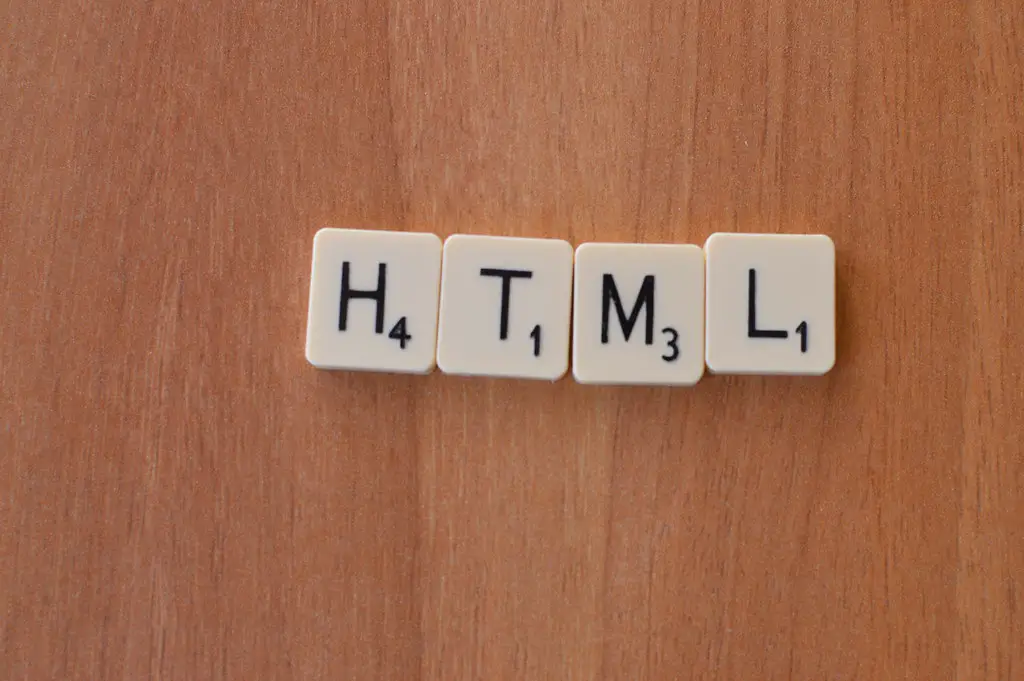How to Add an Image to Your HTML Document Using the IMG Tag
Adding an image to an HTML document is a simple process that can be accomplished using the IMG tag. This tag is used to embed an image into the document, and it requires two attributes: src and alt.
The src attribute specifies the location of the image file, which can either be a relative or absolute path. For example, if you have stored your image in a folder called “images” on your website, you would use “images/myimage.jpg” as the value for this attribute.
The alt attribute provides alternative text for users who are unable to view images on their device or browser. This text should provide a brief description of what is depicted in the image so that users can still understand its context even if they cannot see it directly.
To add an image to your HTML document using the IMG tag, simply include these two attributes within it like so:
<img src="images/myimage.jpg" alt="A picture of a beach at sunset" />
This will embed your desired image into your HTML document and provide alternative text for those who cannot view it directly.
How to Use the FIGURE and FIGCAPTION Tags for Adding Images in HTML
The FIGURE and FIGCAPTION tags are HTML elements used to add images to a web page. The FIGURE tag is used to define the image, while the FIGCAPTION tag is used to provide a caption for the image. Together, these two tags can be used to create an attractive and informative display of images on a website.To use these tags, begin by placing the opening FIGURE tag before the image code. This will tell the browser that an image is about to be displayed. Then, insert your image code within this opening tag and its corresponding closing FIGURE tag. For example:
<figure>
<img src="example-image.jpg" alt="Example Image" />
</figure>
Next, you can add a caption for your image using the opening and closing FIGCAPTION tags directly after your figure element code (but still within its parent element). For example:
<figure>
<img src="example-image.jpg" alt="Example Image" />
<figcaption>Example Image</figcaption>
</figure>
Finally, you can style your figure element using CSS or other styling languages as desired in order to make it look more attractive on your website or blog post. With these simple steps, you can easily add images with captions into any HTML document!
Tips for Optimizing Images for Web Pages with HTML
1. Choose the Right File Format: When optimizing images for web pages, it is important to choose the right file format. JPEG and PNG are two of the most common formats used on web pages, and each has its own advantages and disadvantages. JPEGs are best for photographs or complex images with lots of colors, while PNGs are better suited for simpler graphics with fewer colors.
2. Compress Your Images: Compressing your images can help reduce their file size without sacrificing quality. There are a variety of tools available online that can help you compress your images quickly and easily.
3. Use Appropriate Image Sizes: It is important to use an appropriate image size when optimizing images for web pages as larger files will take longer to load on a page than smaller ones will. Try to keep your image sizes as small as possible without sacrificing quality or clarity in order to ensure faster loading times on your website or blog post.
4. Use Alt Text: Alt text is an HTML attribute that provides a brief description of an image if it fails to load properly on a page or if someone using assistive technology such as screen readers cannot see it clearly due to visual impairments or other disabilities. Adding alt text helps make sure everyone can access the content on your website regardless of their abilities or technical limitations they may have.
5. Optimize Your Image Names: When saving an image file, make sure you give it an appropriate name that accurately describes what’s in the picture rather than just using generic terms like “image1” or “photo2”. This will help search engines index your content more effectively so people searching for related topics can find them more easily.
Q&A
Q1: How do I add a picture in HTML?
A1: To add an image to an HTML page, use the IMG tag. The IMG tag requires the src attribute to identify the location of the image you want to embed on your web page. You can also include height and width attributes to specify the size of your image.
Q2: What is an example of adding a picture in HTML?
A2: An example of adding a picture in HTML would be as follows:
<img src="image_name.jpg" alt="Image Description" width="500" height="400" />
This code will display an image named “image_name.jpg” with a width of 500 pixels and a height of 400 pixels on your web page.
Q3: What is the difference between using img and background-image tags?
A3: The main difference between using img and background-image tags is that img tags are used for displaying images within content, while background-image tags are used for setting images as backgrounds for elements such as divs or body elements. Additionally, when using img tags, you can specify dimensions for your images while with background-images you cannot set specific dimensions but rather just set it as cover or contain which will scale it accordingly depending on its container’s size.
Q4: Can I use SVG files with HTML?
A4: Yes, SVG files can be used with HTML by including them within an element or by referencing them via their URL within an IMG element like any other type of image file (e.g.,.png or.jpg).

